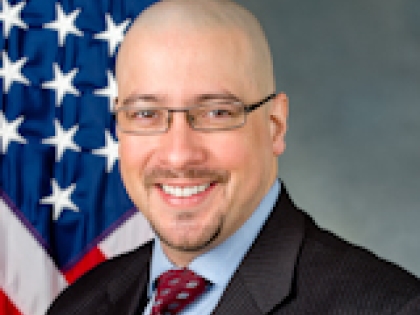
Senator Rivera Says Republican District Lines Disenfranchise Minority Communities, Violate Voting Rights Act
Gustavo Rivera
March 16, 2012
Albany, NY – State Senator Gustavo Rivera (D,WF-Bronx) spoke on the floor of the New York State Senate, declaring the Republican redistricting proposal that was debated and passed last night to be in violation of the Voting Rights Act because it disenfranchises minority communities in the State of New York. After speaking on the floor of the Senate, Senator Rivera issued the following statement and examples of how the Republican redistricting proposal disenfranchises minority voters throughout the state.
“The right to fair representation is a basic civil right that was outlined by the Voting Rights Act. The Republicans redistricting proposal is based on political concerns, incumbency and a desire to extend their stay in the majority based on an artificial majority. The only way the Senate Republicans are able to ensure their artificial majority is at the expense of the rights of minority communities, and in particular the Latino community, to be able to elect representation of their choice.
Despite the fact that the majority of my Republican colleagues signed a pledge during their campaigns that said they would support independent redistricting, we still have a political process almost two years later. I believe strongly that until we have independent redistricting, whether it be the creation of an independent commission or if this process were taken to the courts, minority communities will not be given fair district lines at a state level and consequently, will not have the opportunities for representation at a state level.”
The Republican plan has given us several examples to draw from:
In their plans, the Republican Legislative Taskforce on Reapportionment (LATFOR) rips East Harlem apart.
- LATFOR reduced the number of Latino voters in Senate District 29, while doubling the number of white voters. This is a violation of Section 5 of the Voting Rights, diluting minority voting strength
- Despite historically being a Latino district routed in East Harlem and the South Bronx, the 29th Senate District is now being taken to the Upper West Side, where there no traditional community of interest exists. This demonstrates a clear intent to retrogress, or to artificially make this district less Latino.
Republicans Ignored the Citizen Voting Age Population in Re-drawing Latino District
- In the proposal, Senate District 31 has a CVAP that is 44.02% Hispanic and 40.14% non-Hispanic white, while other plans submitted to LATFOR proposed a compact district including Washington Heights in Upper Manhattan with a CVAP that is 47.52% Hispanic and 34.31% non-Hispanic white or even 48.74% Hispanic and 33.12% non-Hispanic white. The appropriate measure of potential voting power should be the citizen voting-age population (CVAP) so as to not retrogress the district. Instead, they once again violate Section 5 of the Voting Rights Act.
No Minority District Despite Growth in Nassau County’s Hispanic, Asian-American and African-American Communities
- In Nassau County, the Hispanic population grew by 47% since 2000, while the African American population increased by 9% and the Asian American community grew by 62%. The minority populations are so carefully balanced between districts that the combined black and Hispanic voting-age population (VAP) percentage of Senate District 6 is 31.42%, and the figure for adjoining Senate District 8 is 31.23%. Both senators are spared the need to earn the support of minority-group voters.
- In Nassau County, there is a compact, contiguous chain of connected communities and villages where the African American, Hispanic and Caribbean populations can all be included in one senate district. But the plan considered today does not create this district. Instead, the compact, contiguous and cohesive communities of Elmont, South Floral Park, North Valley Stream, Valley Stream, Lakewood, Hempstead Village, Uniondale, Roosevelt, Freeport, Carle Place and Westbury are divided into four separate districts. This is a clear example of splitting or cracking communities of interest.
- Under these plans, Nassau County will not have a minority district, however the Nassau County Legislature already has three minority districts. In 1994, federal Judge Arthur Spatt ordered the creation of minority districts in the new county legislature because the county met Voting rights Act tests.
Suffolk County Black and Hispanic Populations are Split Again
- The black and Hispanic communities in the Town of Babylon are divided once again between SD’s 4 and 8, along a line that differs little from the previous decades. In the Town of Islip, the Hispanic and black communities are again divided between Senate District 3 and 4. The line through Brentwood, splitting the Hispanic and black populations of the Town of Islip between Senate Districts 3 and 4, is identical to the boundary that was drawn in 1982, 1992, and 2002. The communities with large black and Hispanic populations are split among three districts, a pattern that has been carefully maintained since 1982.
Share this Article or Press Release
Newsroom
Go to NewsroomEarth Day 2016 Poster Contest: District 33
April 14, 2016
